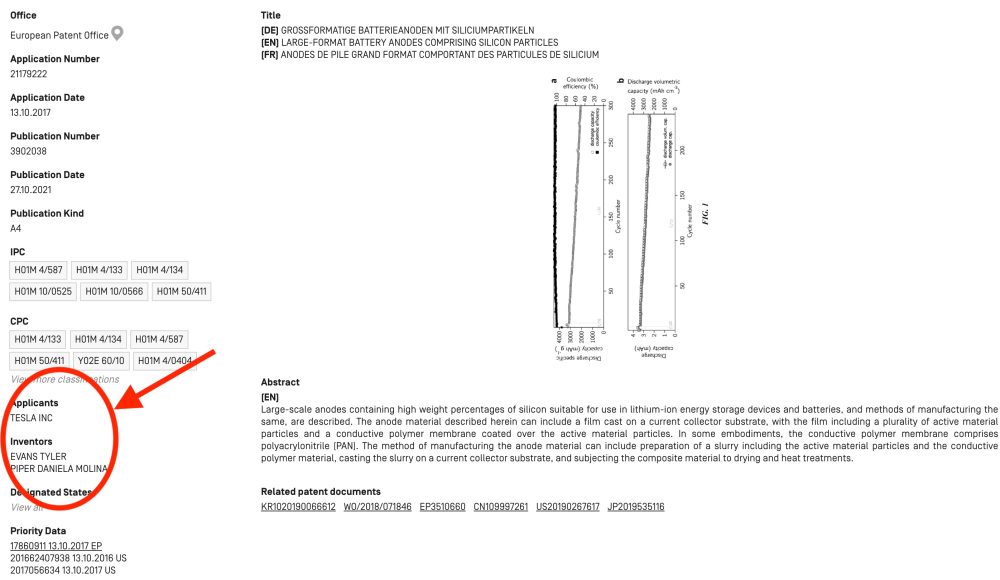
Tesla confirmed that it quietly acquired Colorado-based battery startup SiILion, Inc., in a new patent for a silicon-based battery anode.
Over the last few years, Tesla has been rumored to have acquired SiILion, Inc., a battery technology startup based out of Colorado.
The rumors started after a few of the startup’s employees were hired by Tesla and the automaker started listing battery research jobs in Colorado, where it previously didn’t have R&D operations.
The startup was working on a new high-energy density battery chemistry based on “high-loaded silicon anodes.”
It described on its website that has since been shutdown:
“Developer of an advanced lithium-ion battery designed to address the market’s accelerated demand for higher performance energy storage devices. The company’s technology delivers high-energy batteries by simultaneously incorporating high-loaded silicon anodes, nickel-rich NMC cathodes, and a non-flammable ionic liquid electrolyte and offer an increase in both energy density and specific energy in lithium-ion batteries, enabling users to get safer and lower-cost energy storage devices for defense, consumer electronics, and electric vehicle applications.”
The startup received several grants from the US Department of Defense and US Department of Energy before going dark in 2018.
While three researchers at the company changed their job positions to Tesla, cofounders Tyler Evans and Daniela Molina Piper never did.
But we now can confirm that their technology is owned by Tesla.
One of the SiILion duo’s most important patents, called “Large-format Battery Anodes Comprising Silicon Particles,” is now listed as Tesla’s:

Tesla is listed as the “applicant” for the patent while Evans and Molina Piper are listed as inventors.
They describe the anode technology in the patent’s abstract:
“Large-scale anodes containing high weight percentages of silicon suitable for use in lithium-ion energy storage devices and batteries, and methods of manufacturing the same, are described. The anode material described herein can include a film cast on a current collector substrate, with the film including a plurality of active material particles and a conductive polymer membrane coated over the active material particles. In some embodiments, the conductive polymer membrane comprises polyacrylonitrile (PAN). The method of manufacturing the anode material can include preparation of a slurry including the active material particles and the conductive polymer material, casting the slurry on a current collector substrate, and subjecting the composite material to drying and heat treatments.”
Interestingly, during Tesla’s Battery Day, the automaker confirmed that its new 4680 cell is powered by a new anode enabled by a new silicon.
Earlier this week, we reported on Tesla delivering a new anode production line at Gigafactory Texas.
It wouldn’t be the only battery startup that Tesla acquired to secure technology for its next-gen 4680 battery cell.
As we previously reported, Tesla also acquired Canada’s Springpower International for its cathode technology.
Subscribe to Electrek on YouTube for exclusive videos and subscribe to the podcast.
Author: Fred Lambert
Source: Electrek



